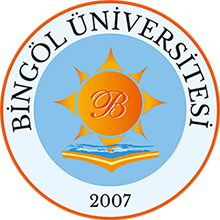التفسير الإشاري والكلامي في حاشية السَّيالكوتيّ على تفسير القاضي البيضاوي
Özet
الملخص:
نبغ الشيخ السَّيالكوتيّ في عصره في شتى أنواع العلوم، ولاقى قبولاً من حاكم عصره، فأكرمه وهيأ له
الأسباب التي تعينه على خدمة العلم، عُني الشيخ بتفسير القاضي البيضاوي فكتب حاشيته المشهورة،
ولكنه لم يتمها لأسباب لم يقف عليها الباحث، درَس الشيخ السَّيالكوتيّ في حاشيته جميع الجوانب
العلمية، والنحوية والصرفية والبلاغية، والكلامية، والفقهية، والإشارية، والتصوف. تناول الباحث
دراسة جانبين من الجوانب التي اهتم بها السَّيالكوتيّ في الحاشية، الأول الجانب الكلامي ، والآخر
الجانب الإشاري. كتب الباحث في مطلع البحث تعريفًا بالشيخ السَّيالكوتيّ وحياته الشخصية
والعلمية، والتعريف ب عصره، وسبب تصنيفه للحاشية ومنهجه فيها، ثم درس الباحث التفسير الكلامي
من حيث تعريفه، وتاريخ نشأته، ومؤلفاته، ومناهج المؤلفين فيه. ودرس الباحث أيضًا التفسير
الإشاري من حيث تعريفه وأدلته وشروطه وأقسامه، وطرق تحصيله وأقوال العلماء في هذا اللون من
التفسير، ومؤلفاته، ومناهج المؤلفين فيه. ثم عرض الباحث آراء السَّيالكوتيّ الكلامية فشرح بعض
المصطلحات التي اهتم بها، ورأيه في المسائل المتعلقة بمباحث الإلهيات، والنبويات، والسمعيات،
وردوده على المخالفين كالمعتزلة، والخوارج، والكراميَّة، والظاهرية، ومنهجه في انتصاره لمذهب أهل
السنة والجماعة من الأشاعرة والماتريدية. ثم شرح الباحث آراء السَّيالكوتيّ الإشارية، وبين منهجه في
عرضها ورأيه فيها، حيث كا ن يهتم ببعض الإشارات اهتماماً بالغ اً ويطيل الكلام فيها، وقد يقتصد
ويتوسط، وقد يترك التعليق على الإشارات بالكلية. عرض الباحث الإشارات المتعلقة بمعرفة الله تعال،
ومحبته، وطريق الوصول إليه. والإشارات المتعلقة بمظاهر العبودية، والإشارات ا لمتعلقة بالكون والإنسان
والحياة، في كل ذلك عُرِض رأيُ السَّيالكوتيّ الكلامي، والإشاري، ومنهجه في التعامل معها ÖZET:
Şeyh Seyalkûtî, dönemin çeşitli bilim dallarında uzman bir âlim olarak tanınmış ve devrin hükümdarı tarafından takdir edilmiştir. Şah Cihan, ilim yolunda hizmetlerini desteklemek amacıyla kendisine birçok imkân sağlamıştır. Seyalkûtî, Beydâvî’nin tefsirine büyük bir ilgi göstererek bu eser üzerine ünlü haşiyesini kaleme almış; ancak bilinmeyen sebeplerden ötürü haşiyesini tamamlayamamıştır. Seyalkûtî, haşiyesinde nahiv, belâgat, akide, fıkıh ve tasavvuf gibi çeşitli ilim dallarına dair konuları ele almıştır. Bu tezde Seyalkûtî’nin haşiyesi, Kelamî ve işârî yönlerden incelenmiştir. Araştırmanın başında Seyalkuti'nin hayatı ve ilmî şahsiyeti hakkında bilgi verilmiş, ardından yaşadığı dönem, hâşiyeyi yazma nedenleri ve haşiyede izlediği yöntemler ele alınmıştır. Ayrıca, kelâmî tefsirin tanımı, tarihsel gelişimi ve bu alandaki eserlerin yöntemleri incelenmiştir. Devmında işârî tefsirin tanımı, şartları, âlimlerin bu konudaki yaklaşımları, işârî tefsiri savunanların delilleri, işârî tefsirin en meşhur eserleri ve müfessirlerin yaklaşımları ele alınmıştır. Daha sonra Seyalkûtî’nin ilâhiyat, nübüvvet ve sem‘iyyât konularındaki Kelamî görüşleri sunularak muhalif mezheplere, özellikle Mu‘tezile, Kerrâmiyye ve Zâhiriyye gibi gruplara karşı verdiği cevaplar ve Eş’arîlik ile Mâtürîdîlik kapsamında Ehl-i Sünnet mezhebinin savunma yöntemleri aktarılmıştır. Ayrıca Seyalkûtî’nin haşiyesinde ele aldığı işârî meseleler, bazen detaylı bir şekilde işlenerek bunların yöntemleri açıklanmıştır. Araştırmada, Allah’ın zatı, sıfatları ve isimleriyle ilgili işaretler, Allah’ı tanıma yolları ve O’nun sevgisine ulaşma yöntemleri, Hz. Peygambere dair işaretler, kozmik ve nefsânî işaretler ele alınarak Seyalkûtî’nin yöntem ve yaklaşımı sunulmuştur. ABSTRACT:
Sheikh Sialkoti emerged as a distinguished scholar of his time, excelling in various branches of knowledge and earning the favor of the ruler of his era, who honored him and provided the means to support his scholarly pursuits. Sheikh Sialkoti devoted significant attention to Al-Baydawi’s Tafsir al-Qadi, writing his renowned commentary on it. However, for reasons unknown to the researcher, he did not complete the commentary. In his annotations, Sheikh Sialkoti addressed a comprehensive array of disciplines, including linguistics, syntax, morphology, rhetoric, theology, jurisprudence, mystical exegesis (ishari), and Sufism. This research focuses on two specific aspects of Sialkoti’s commentary: the ishari (mystical exegesis) aspect and the theological aspect. The researcher begins by defining ishari exegesis, discussing the scholars’ perspectives on it, the evidence provided by its proponents, the conditions for its acceptance, its most notable works, the methodologies of its exegetes, and the means of deriving ishari meanings. The study then introduces Sheikh Sialkoti, detailing his lineage, birth, upbringing, era, relationship with the ruler, death, school of thought, scholarly contributions, mentors, students, peers, and his historical context. The researcher then studied the theologica interpretation in terms of its definition, history, and effects. The study presents the ishari issues addressed by Sialkoti, examining his methodology and opinions. The researcher observes that Sialkoti sometimes offered detailed commentary on certain mystical indications, while at other times he was concise or refrained from commenting altogether. The study highlights ishari indications related to God’s attributes and names, the path to knowing and loving God, those concerning the Prophet Muhammad (peace be upon him), as well as cosmological and self-related indications. For each of these, the research discusses Sialkoti’s perspectives and methodology. Regarding the theological aspect, the researcher investigates Sialkoti’s views and rebuttals of dissenting groups such as the Mu‘tazila, Karramiyya, and Zahiriya, as well as his defense of the Sunni orthodoxy (Ahl al-Sunnah wa al-Jama‘ah). This section explores theological terminology, various sects and schools of thought, his stance on them, issues concerning prophethood, eschatology, and the unseen realms.
Koleksiyonlar
- Temel İslam Bilimleri [162]

DSpace@BİNGÖL by Bingöl University Institutional Repository is licensed under a Creative Commons Attribution-NonCommercial-NoDerivs 4.0 Unported License..













